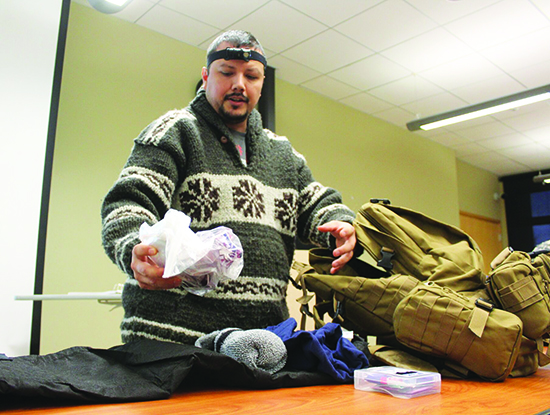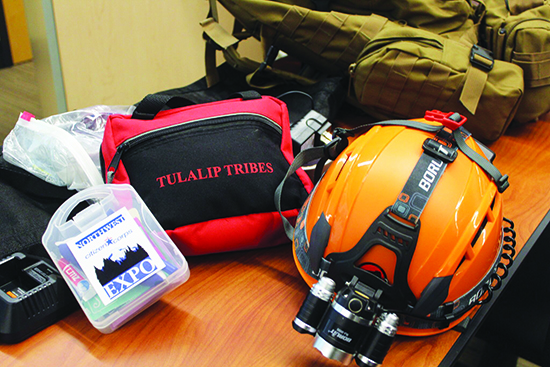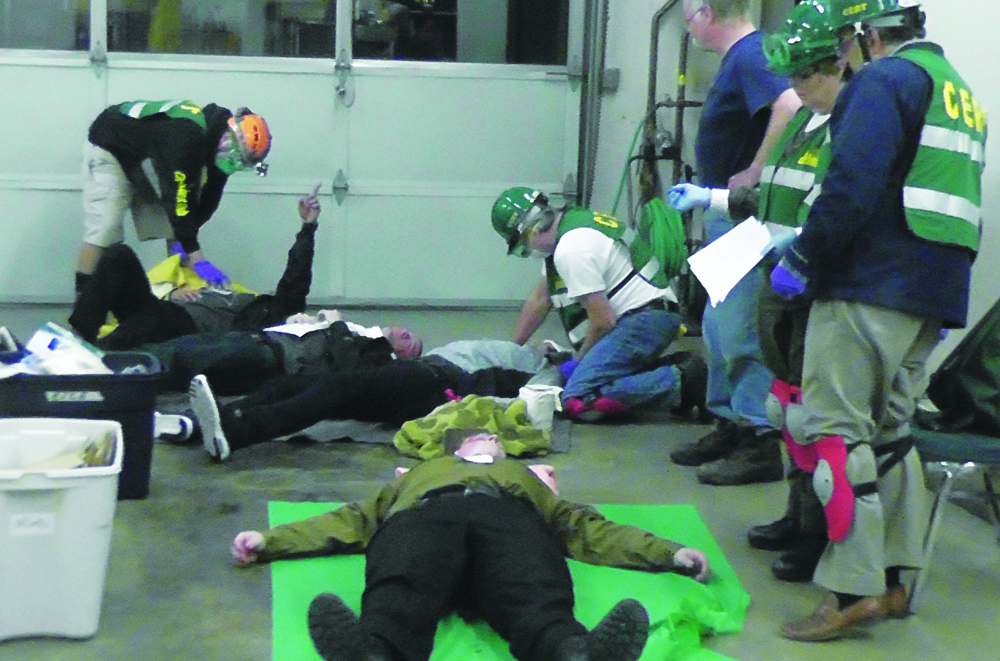By Kalvin Valdillez, Tulalip News
Disasters strike at any given moment. Whether it’s weather, like the recent snowstorm in the Pacific Northwest, earthquakes, forest fires or tsunamis, it’s important to be prepared for natural disasters to ensure the safety and survival for yourself, your family and community. Twice a year, the Tulalip Tribes Office of Emergency Management hosts Community Emergency Response Team (CERT) trainings at the Tulalip Administration Building. The course teaches local citizens how to be prepared and how to respond when an unexpected emergency or disaster occurs. Twenty community members recently began their eleven-week CERT journey to help provide a safer tomorrow for Tulalip.
“Throughout this course, you will become more self-reliant and be able to help your community base,” Tulalip Emergency Preparedness Manager, Ashlynn Danielson, explained to the class. “When a disaster strikes, everyone would like help from professional first responders immediately, but the reality is, bridges can be down and roads can be closed. How many times have we had a windstorm where Marine Drive had several trees down and PUD couldn’t get to us for hours? Our overall goal is to create a more resilient community. We want you to have tools and knowledge to be able to set a shelter in place and be able to help thy neighbor and move forward from there.”
The course is an extensive, interactive program where students must pass a series of tests and emergency drills in order to graduate and receive a certified CERT certificate. The trainings cover fire safety, medical operation and triage, team organization, utility control, and damage assessment as well as search and rescue. Students also assemble their own go-bags, or survival kits, to take home and are encouraged to make go-bags with their families.
“A go-bag is essential and needs to be on hand in case of an emergency,” states CERT Trainer, Eric Cortez. “Your go-bag covers your basic human needs as far as security, shelter, food, water, medical and all the essentials. Go-bags are different for everybody because everyone has different needs. What I normally carry is a knife. I always keep a cutting tool on me because it’s useful. You can do a lot with a cutting tool; you can manufacture other items to make your survival situation better. I also carry a flashlight. A flashlight is used often and it’s the first form of security in most situations. And a bandana for medical purposes.”
In emergency situations, when medical attention is required but cannot be accessed, CERT trainees learn how to provide basic medical assistance until first responders arrive. Students also learn how to properly inspect their neighborhoods for any extensive damage, hazardous areas or injuries to their neighbors; and conduct detailed reports for the proper authorities.
“[CERT] is important to our community because our rez is long,” states CERT student and Tulalip tribal member, Margie Santibanez. “We need to have a plan in place for everybody to be checked on. I think more tribal members need to attend these classes, especially because we have so many housing developments. We need to make sure our people are safe, our elders are safe, our youth are safe and if anyone needs help we can figure out a way as a community.”
“We’ve always been survivors as Indigenous Peoples, so why not be even more prepared?” said Eric. “We survive as a Tribe, we prosper as a Tribe and can get through anything together as a Tribe.”
Current CERT students will complete their training and graduate this spring. The Office of Emergency Management is currently in the process of developing a Teen CERT training program and will begin their next CERT trainings in the Fall. For more details, please contact the Office of Emergency Management at (360) 716-4006.



